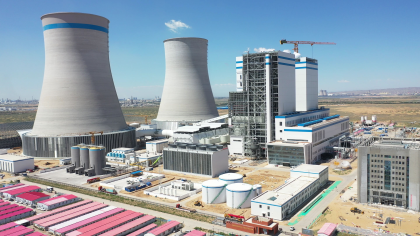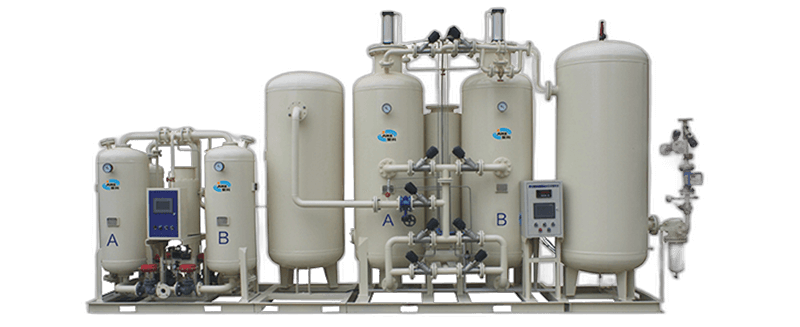A Comprehensive Solution for a New Nitrogen Maintenance Process in Power Plant Thermal Systems—The Application of PSA Nitrogen Generators
A Comprehensive Solution for a New Nitrogen-Based Maintenance Process in Power Plant Thermal Systems

Against the backdrop of rapid development in China's machinery industry and power sector, large-capacity, high-parameter power generation equipment has been widely adopted, leading to an oversupply of electricity and reshaping the market dynamics. Meanwhile, core components of power plant thermal systems—such as boilers and thermal pipelines—are predominantly made from high-strength alloy steel or carbon steel. When these materials are shut down, the trapped internal moisture struggles to evaporate, while air can easily penetrate, creating ideal conditions for metal corrosion. This not only causes thinning of metal walls, reduces pressure-bearing capacity, and shortens equipment lifespan but also leads to excessive Fe ion levels in the feedwater, necessitating extensive blowdowns. Hence, reliable maintenance during equipment shutdown periods is absolutely critical.
Traditional thermal equipment maintenance typically involves three main methods: nitrogen purging, desiccant-based preservation, and dry-air ventilation. Among these, nitrogen purging stands out due to nitrogen's inert nature, which effectively isolates oxygen, delivering superior preservation results compared to the other two methods. As a result, it is widely used in the maintenance of power-generation equipment during shutdowns. However, conventional nitrogen purging using bottled nitrogen has significant limitations. The core issue lies in its reliance on high-pressure steel cylinders for nitrogen storage, which are constrained by both individual cylinder capacity and operational pressure. To achieve the required nitrogen pressure and concentration inside equipment like boilers—conditions essential for effective preservation—it often becomes necessary to frequently replace cylinders or even simultaneously connect multiple cylinders for charging. This process not only adds complexity but also leads to inefficient nitrogen purging, making it difficult to swiftly complete the equipment’s nitrogen replacement and pressure maintenance. Consequently, this approach undermines both the timeliness and cost-effectiveness of equipment shutdown maintenance.

To address the shortcomings of traditional bottled nitrogen-based maintenance, a stable and efficient nitrogen supply system can be established by introducing a new type of nitrogen-generation system. The specific implementation approach and its advantages are outlined below:
From a system-building perspective, once the nitrogen-generation system is operational, it can consistently produce and supply nitrogen gas that meets the technical specifications required for thermal equipment maintenance. This ensures a continuous, compliant gas supply for nitrogen-based preservation of all components within the thermal system, effectively eliminating the traditional reliance on high-pressure cylinders. Compared to the conventional method of using bottled nitrogen for charging, this system eliminates the need for frequent cylinder replacements due to capacity limitations, while also simplifying the complex process of coordinating multiple cylinder assemblies for coordinated refilling. As a result, nitrogen-charging maintenance tasks are significantly streamlined, enhancing both the convenience and efficiency of system operations. Additionally, in terms of operational efficiency and labor-cost optimization, the new nitrogen-generation system supports DCS-based remote control, allowing staff to manage critical steps—such as nitrogen production and pressure regulation—without needing to physically start or stop equipment on-site. This approach dramatically reduces manpower requirements while boosting overall operational effectiveness.
From the perspective of nitrogen-charging efficiency, traditional bottled nitrogen requires a large number of cylinders to bring the boiler to the specified pressure. In contrast, this system can complete nitrogen charging for the waste heat boiler system in just two hours. Moreover, by regularly pressurizing—starting the nitrogen generator every 6 hours to increase the pressure to above 50 kPa—it can stably maintain the nitrogen pressure within the equipment, ensuring the sustained effectiveness of maintenance. This approach effectively addresses the issues of cumbersome operations and low efficiency inherent in conventional methods.
Additionally, the new nitrogen-generation system boasts significant advantages in both safety and versatility. The system produces ambient-temperature nitrogen gas, thanks to its stable and relatively low operating pressure—eliminating the risk of sudden temperature drops caused by pressure fluctuations, thus preventing the potential frostbite hazards associated with conventional bottled nitrogen. Moreover, this system not only meets the daily nitrogen-charging needs for boiler maintenance but can also be flexibly applied to gas-replacement operations in scenarios such as natural gas pressure-regulating stations and gas turbine system overhauls. The nitrogen-charging and replacement process is simple and swift, further enhancing the overall efficiency of equipment operation and maintenance. As a result, it provides a reliable, efficient, and safe solution for thermal system shutdowns and maintenance at power plants.
Other areas
Oil storage and pressurized pipeline cleaning and purging of oil and gas wells, nitrogen sealing, nitrogen displacement, solvent recovery.
Used for food preservation and grain storage, pest control, food drying and sterilization, quick freezing of food, etc.
Provide the necessary gas raw materials for the preparation of new energy materials, battery production, and create an inert gas environment.
Ensure the manufacturing of electronic components and the stable operation of equipment, providing gas support for maintenance, combustion assistance, cooling, and other aspects related to thermal power generation equipment.
Nitrogen generator: Prevents oxidation, inhibits bacterial growth, and produces odors in biopharmaceuticals, providing protection throughout the process. Oxygen generator: Provides an oxygen-rich environment.
When signs of fire occur in the goaf or other locations, nitrogen injection is needed for fire prevention. The nitrogen device is lowered into the mine. It is used for annealing protective gas and sintering.
Used in the aerospace composite field, providing the necessary inert atmosphere for the molding and reinforcement processes of large carbon fiber composite wings.
Provide protection for the safety of oil and gas reserves, prevent oxidation, nitrogen sealing, and ensure dust suppression, fire prevention, and nitrogen sealing for coal reserves.

